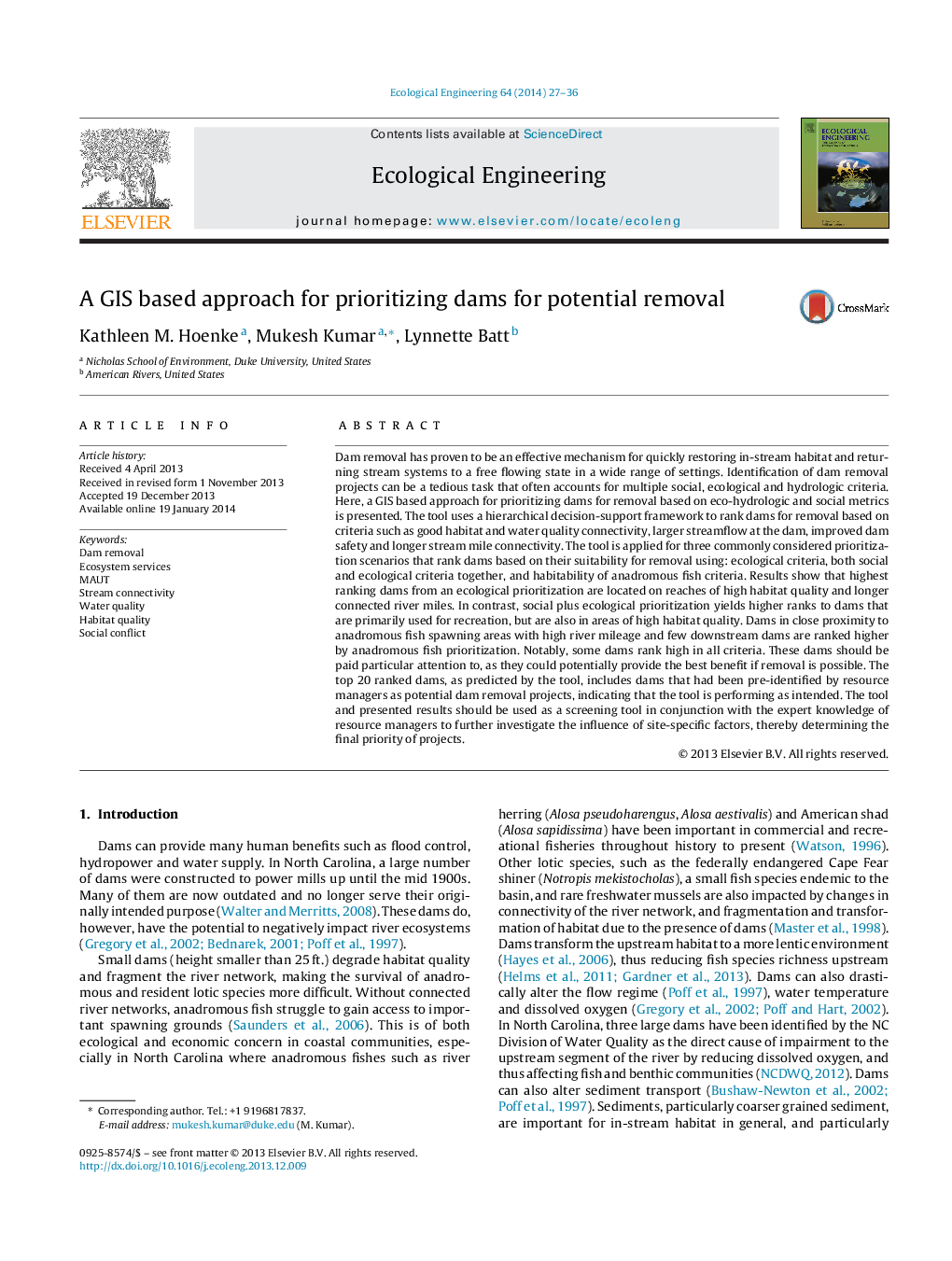| Article ID | Journal | Published Year | Pages | File Type |
|---|---|---|---|---|
| 4389559 | Ecological Engineering | 2014 | 10 Pages |
Dam removal has proven to be an effective mechanism for quickly restoring in-stream habitat and returning stream systems to a free flowing state in a wide range of settings. Identification of dam removal projects can be a tedious task that often accounts for multiple social, ecological and hydrologic criteria. Here, a GIS based approach for prioritizing dams for removal based on eco-hydrologic and social metrics is presented. The tool uses a hierarchical decision-support framework to rank dams for removal based on criteria such as good habitat and water quality connectivity, larger streamflow at the dam, improved dam safety and longer stream mile connectivity. The tool is applied for three commonly considered prioritization scenarios that rank dams based on their suitability for removal using: ecological criteria, both social and ecological criteria together, and habitability of anadromous fish criteria. Results show that highest ranking dams from an ecological prioritization are located on reaches of high habitat quality and longer connected river miles. In contrast, social plus ecological prioritization yields higher ranks to dams that are primarily used for recreation, but are also in areas of high habitat quality. Dams in close proximity to anadromous fish spawning areas with high river mileage and few downstream dams are ranked higher by anadromous fish prioritization. Notably, some dams rank high in all criteria. These dams should be paid particular attention to, as they could potentially provide the best benefit if removal is possible. The top 20 ranked dams, as predicted by the tool, includes dams that had been pre-identified by resource managers as potential dam removal projects, indicating that the tool is performing as intended. The tool and presented results should be used as a screening tool in conjunction with the expert knowledge of resource managers to further investigate the influence of site-specific factors, thereby determining the final priority of projects.
